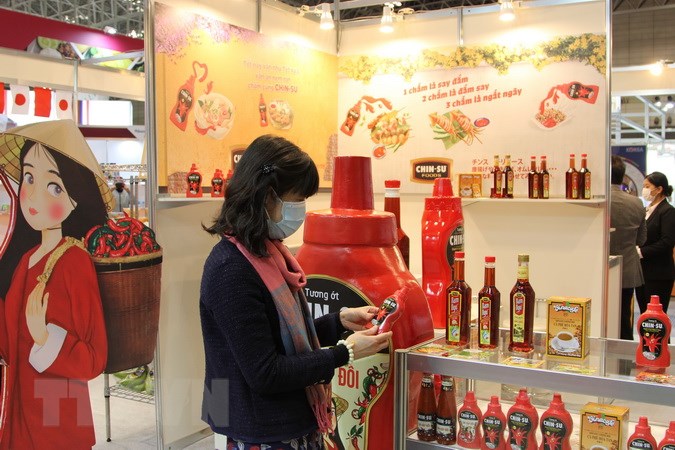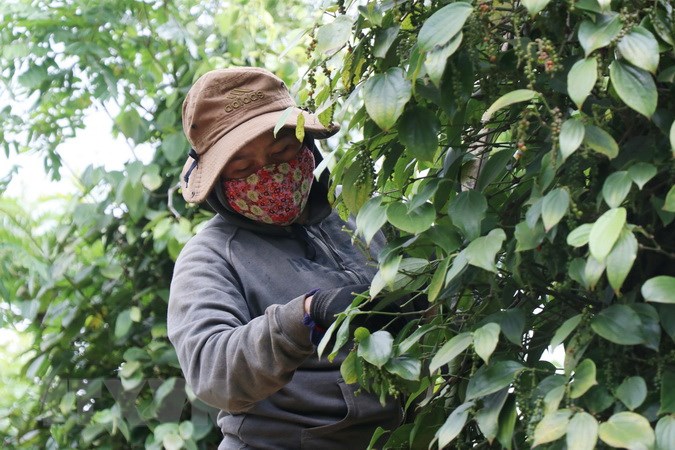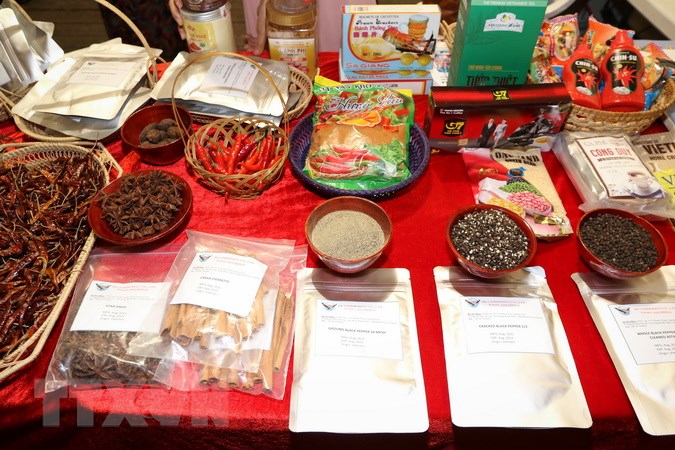Vietnam is becoming a significant supplier for the rest of the globe due to the country’s amazing development in the agriculture, spice, and flavoring sectors.
Vietnam is becoming a significant producer of spices and flavorings for the global market due to the country’s rapid change in the agricultural sector and the spice and flavoring industry.
Vietnam’s economy and export patterns have greatly benefited in recent years from manufacturing and exporting spices and flavorings in general.
Mr. Le Hoang Tai, the Deputy Director of the Trade Promotion Department under the Ministry of Industry and Trade, stressed this information at the Conference on Online Trade in Spices and Flavoring Products in 2021, which the Trade Promotion Agency organized in the afternoon. 8/9.
According to Mr. Le Hoang Tai, Vietnam has a biodiversity that allows it to produce agricultural goods, such as spices and flavorings, due to its advantageous geographic location that spans several diverse soil types and temperatures. Both the tastes and the quality are highly distinct from other similar goods across the world.
Import partners, wholesale and retail distributors, as well as individuals in several places across the world, have had a new perspective on the procedure thanks to a range of trade promotion activities and technical support. Vietnamese spice and flavoring industry modernization and innovation.
Therefore, this activity will enable companies in the spice and flavoring sector to get through tough times and expand sustainably in the direction of gradually lowering raw goods, boosting intensely processed products with high quality and better-added value.
The biggest percentage of Vietnam’s export revenue is made up of pepper, which Mr. Le Hoang Tai underlined is one of the country’s most well-known spices on the global market. The demand for pepper and many other spices and flavorings throughout the world is currently rising, but certain supplies have limited export volume owing to deficiencies brought on by the COVID-19 pandemic, driving up logistical costs.
At the Rieti International Chili Fair, several Vietnamese spices
The EU, followed by North America, East Asia, several South Asian nations, and the Middle East, is the region with the greatest market for spices worldwide. Germany is the top consumer of spices and herbs in the EU. English is then followed by carpentry.
Vietnamese suppliers of spices and flavorings are currently able to produce products with value-added and are increasingly able to fulfill the demanding standards of overseas partners. for many top importers and premium distribution channels in various parts of the world, strong growth, superior quality, and safety.
However, Mr. Le Hoang Tai noted that communities and enterprises need to have a strategy to restore production, apply cutting-edge processing technologies, produce a range of goods, and take advantage of incentives from new-generation free trade agreements that Vietnam has recently signed. to enhance exports. This is because Vietnam must have a competitive advantage in the global spice and flavoring market after it has effectively managed the COVID-19 problem.
Saudi Arabia uses a variety of spices, the majority of which are imported from other countries, including Vietnam, according to Mr. Tran Trong Kim, First Secretary and Head of the Vietnam Trade Office in Saudi Arabia, who shared at the conference.
A benefit for nations that export items to the market, such as Vietnam, is the Saudis’ propensity for making frequent and large purchases.
All meals use herbs and spices including pepper, nutmeg, cinnamon, anise, and many more. Seasoning salt, pepper, spice blend, paprika, turmeric, and ginger are among the other goods.
Saudi Arabia has a high demand for organic herbs that are beneficial to health and wellbeing as a result of spice producers’ extensive range of seasoning goods being offered to cater to the changing tastes and preferences of the younger generation. As an added flavor for foods, soy sauce, chili sauce, and for seasoning purposes.

In addition, the Saudi Arabian herb, spice, and spice industry offer a variety of goods from several worldwide, regional, and local companies, with fierce rivalry among the top producers. premier provider, each providing unique and creative items.
There is a large demand for organic foods and spices in Saudi Arabia. Additionally, to ensure quality, food safety, and organic requirements, producers are using a few organic spices like chile, ginger, and turmeric. These spices are treated with steam. the basis for seasonings, spices, and herbs. This pattern supports businesses’ efforts to keep the market competitive.
Hypermarkets, supermarkets, convenience stores, electronic retail stores, and others are the primary distribution routes for herbs, spices, and other seasonings. In Saudi Arabia, glass, flexible packaging, paper and paperboard, rigid plastic, and other materials are used as the primary packaging materials for herbs, spices, and seasonings. There are many various types of packing boxes, including jars, bottles, bags/packs, tubs, boxes, bags, and tubes.
According to observations, Saudi Arabia’s market for organic herbs, spices, sauces, and condiments is expanding quickly as a result of population expansion, increased consumption and spending power, and new packaging trends. both branding and distribution.
The market for herbs, spices, and seasonings is mostly dominated by organic spices such as hot peppers, vanilla, ginger, cinnamon, and black pepper in addition to different varieties of items that are readily accessible. In the next years, there will be a particularly high demand for upscale sauces, sauces, and condiments in Saudi Arabia.
Notably, Saudi Arabia applies a 1-12% import tax depending on the kind of goods; starting on July 7, 2020, the VAT rate raised from 5% to 15%.
After a full year after the tax increase’s introduction, individuals have gradually become accustomed to it, and their purchasing power has increased once again.
Statistics predict that Vietnam’s exports to Saudi Arabia would total 460 million USD in 2020. Exports from Vietnam to Saudi Arabia totaled 225 million USD, particularly in the first seven months of 2021. Vietnamese pepper and spices have annual revenue of around 10 million USD.

Mr. Tran Trong Kim provided some more information during the conference, including the need for food, drink, and other items to be certified by the General Department of Drugs and Food SFDA when exporting to this market.
Additionally, it is advised that commercial transactions be conducted using an irrevocable letter of credit (LC), together with a deposit for payment, as the verification of the company is expensive and time-consuming. guaranteed.
On the other hand, avoid dealing with a brokerage partner and instead demand that the Vietnamese firm send the brokerage charge, attorney’s fee, and contract approval fee in advance because these are the types of costs that thieves frequently take. business cash
Mr. Tran Trong Kim stated that as buyers in the Middle East want to view products firsthand, enterprises should give samples to these clients first. In conjunction with local Chambers of Commerce and Industry, it is also delivered to the Trade Office for exhibition in the showroom for Vietnamese products and at economic diplomacy events.
Additionally, as Vietnamese products do not have their brand, when they are exported, they are packaged under the distributor’s and importer’s names. To improve their position and reputation, firms must concentrate on creating brands for their products.
The Food and Drug Administration of Saudi Arabia (SFDA) in particular issues regulations on food cleanliness and safety, conducts inspections, oversees operations, and gives advice to customers on how to discard potentially unsafe goods. public health.
This demonstrates that the SFDA closely enforces food safety standards and has published regulations on the maximum amount of antibiotics that may be used for all types of antibiotics. cuisine, fresh produce, spices, and fruit.
To prevent unintended losses during the transaction, firms should be aware that they may get assistance from the deal or the Export Support Center (Trade Promotion Department).


